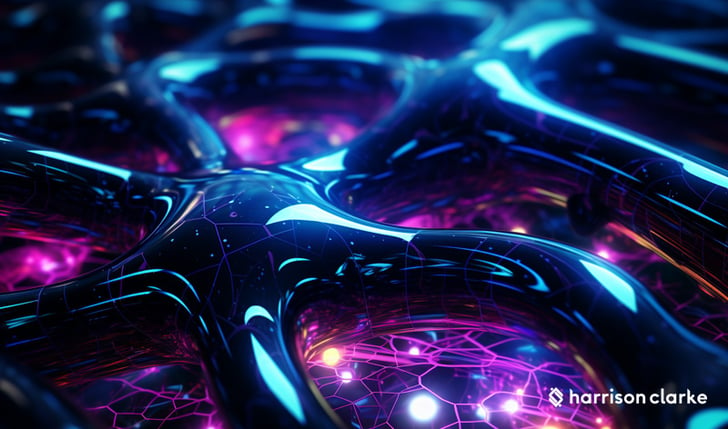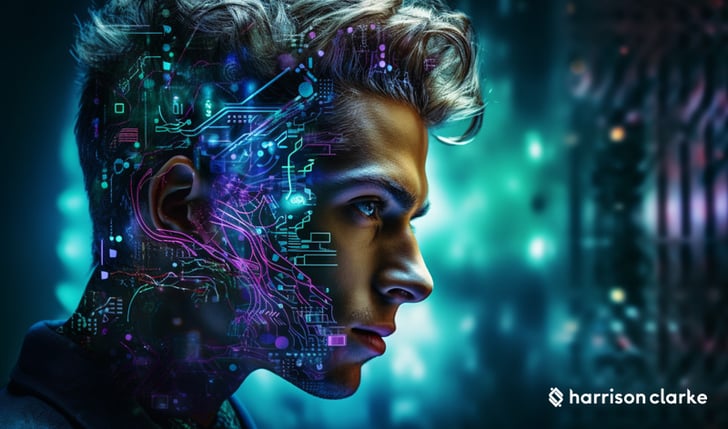In today's rapidly evolving digital landscape, the convergence of data and artificial intelligence (AI) has unleashed a powerful force known as deep learning. For Chief Marketing Officers (CMOs), Chief Information Officers (CIOs), Chief Executive Officers (CEOs), Software Developers, and Software Engineers, understanding the intricacies of deep learning is no longer just an option; it's a necessity. In this comprehensive guide, we will unravel the mysteries of deep learning, providing an accessible introduction to its core concepts, architectures, and applications. By the end of this article, you'll have a firm grasp of neural networks, convolutional neural networks (CNNs), recurrent neural networks (RNNs), deep learning frameworks, and real-world use cases that illustrate the transformative potential of deep learning in Data & AI applications.
The Rise of Deep Learning

The digital revolution has given rise to a staggering volume of data, often referred to as 'big data.' Simultaneously, advances in computing power and algorithms have fueled the growth of AI, particularly in the realm of deep learning. Deep learning is a subfield of machine learning that focuses on training artificial neural networks to learn and make decisions independently, much like the human brain.
The Fundamentals of Neural Networks
At the heart of deep learning lies the neural network, a computational model inspired by the human brain. Neural networks consist of interconnected nodes, or neurons, organized into layers. These layers include the input layer, hidden layers, and the output layer. Data is fed into the input layer, processed through the hidden layers, and produces an output in the output layer.
In essence, neural networks aim to mimic the human brain's ability to process information through interconnected neurons. Each connection, or weight, between neurons is adjusted during training to optimize the network's performance. The result is a model capable of recognizing patterns, making predictions, and solving complex problems.
The history of neural networks can be traced back to the 1940s when Warren McCulloch and Walter Pitts developed a mathematical model of the biological neuron. However, it wasn't until the 21st century that neural networks truly began to shine, thanks to the availability of vast amounts of data and powerful GPUs that accelerated training.
Convolutional Neural Networks (CNNs): A Breakthrough in Image Processing
For CMOs and software developers, Convolutional Neural Networks (CNNs) are a game-changer in image processing. CNNs excel at tasks like image recognition, object detection, and facial recognition. They achieve this by applying convolutional layers that automatically learn relevant features from the input data, making them particularly effective in handling complex visual data.
Consider the example of autonomous vehicles. CNNs play a crucial role in helping these vehicles identify pedestrians, other vehicles, and road signs, contributing to safer and more efficient transportation.
The concept of CNNs was popularized by Yann LeCun in the late 1990s. LeCun's work on CNNs led to significant advancements in handwriting recognition and paved the way for modern image recognition systems.
Recurrent Neural Networks (RNNs): Mastering Sequential Data
While CNNs excel in tasks involving static data like images, Recurrent Neural Networks (RNNs) are designed to handle sequential data, making them invaluable for CIOs and CEOs exploring AI-driven applications. RNNs have a memory element that allows them to process data with a temporal dimension, such as natural language text, time series data, and speech recognition.
For instance, in the world of finance, RNNs are employed for predicting stock prices based on historical data and market trends. This application showcases the potential of RNNs in making data-driven decisions and maximizing profitability.
The roots of RNNs can be traced back to the 1980s, but they gained widespread attention in recent years due to their success in natural language processing tasks such as language translation and speech recognition.
Deep Learning Frameworks: Building Blocks of AI Applications

The practical implementation of deep learning relies heavily on specialized software libraries known as deep learning frameworks. These frameworks provide the necessary tools and infrastructure to design, train, and deploy neural networks efficiently.
TensorFlow: The Industry Standard
TensorFlow, developed by Google, has emerged as the industry-standard deep learning framework. Its versatility and robust ecosystem make it a top choice for a wide range of AI applications. Whether you're a software engineer creating recommendation systems or a CMO exploring AI-driven marketing strategies, TensorFlow offers the scalability and flexibility needed to bring your ideas to life.
TensorFlow's journey began in 2015 when Google released it as an open-source framework. Since then, it has gained massive popularity and is used by organizations worldwide for various applications, including natural language processing, computer vision, and reinforcement learning.
PyTorch: The Researcher's Choice
PyTorch, backed by Facebook's AI Research group, has gained popularity among researchers and software developers alike. Its dynamic computation graph and user-friendly interface make it an ideal choice for experimentation and prototyping. PyTorch's growing community and ease of use have made it a preferred tool for exploring novel deep learning concepts.
PyTorch was introduced in 2016 and quickly gained traction in the research community due to its flexibility and support for dynamic computation, which simplifies the process of building complex neural network architectures.
Keras: The Beginner's Gateway
Keras, now integrated into TensorFlow, is known for its simplicity and user-friendliness. It serves as an excellent entry point for those new to deep learning. Software engineers and CMOs alike can leverage Keras to quickly develop and test neural network models, making it an invaluable resource for those seeking to understand and harness the power of deep learning.
Keras was initially developed as an independent open-source project by François Chollet in 2015. Its ease of use and compatibility with multiple deep learning frameworks contributed to its rapid adoption.
Chainer: A Dynamic Deep Learning Framework
Chainer, developed by Preferred Networks, is another deep learning framework worth mentioning. It gained popularity for its dynamic computational graph, similar to PyTorch. This dynamic nature makes it well-suited for tasks where the network structure needs to change dynamically during training.
While not as widely adopted as TensorFlow or PyTorch, Chainer remains a valuable choice for researchers and developers working on cutting-edge deep learning projects.
Real-World Applications of Deep Learning

To truly appreciate the impact of deep learning, let's delve into some real-world use cases that showcase its transformative potential in Data & AI applications.
Healthcare: Revolutionizing Disease Diagnosis
In the healthcare industry, deep learning is revolutionizing disease diagnosis. Image classification models based on CNNs are assisting radiologists in detecting cancerous tumors from medical images with unprecedented accuracy. This breakthrough not only enhances patient outcomes but also reduces healthcare costs and resource utilization.
Deep learning's impact on healthcare has been nothing short of remarkable. It has enabled the development of AI-powered diagnostic tools, personalized treatment recommendations, and even drug discovery.
Natural Language Processing (NLP): Conversational AI
For CEOs and CIOs exploring AI-powered customer service and chatbots, NLP powered by deep learning is a game-changer. These applications can understand and respond to human language, providing personalized and efficient customer interactions. This not only improves customer satisfaction but also drives operational efficiency.
The field of NLP has seen a significant transformation with the advent of deep learning. Neural networks, particularly recurrent neural networks (RNNs) and transformers, have revolutionized machine translation, sentiment analysis, and virtual assistants.
Autonomous Vehicles: The Future of Transportation
Autonomous vehicles are poised to transform transportation as we know it. Deep learning algorithms, including CNNs and RNNs, enable these vehicles to perceive their environment, make real-time decisions, and navigate safely. The potential for reducing accidents and increasing mobility is immense.
Deep learning's role in autonomous vehicles extends beyond perception. It involves mapping, path planning, and decision-making, all of which are critical components of self-driving systems.
Finance: Predictive Analytics for Investment
For CMOs seeking to optimize marketing budgets and CEOs making strategic financial decisions, deep learning models have found applications in predictive analytics. These models analyze vast amounts of financial data to predict market trends, helping investors make informed decisions and maximize returns.
The financial industry relies on deep learning for fraud detection, algorithmic trading, credit scoring, and portfolio management. These applications leverage the power of neural networks to uncover hidden patterns and make data-driven predictions.
Agriculture: Precision Farming and Crop Management
In agriculture, deep learning is revolutionizing precision farming and crop management. Drones equipped with cameras and deep learning algorithms can monitor crop health, detect diseases, and optimize irrigation. This technology enables farmers to make data-driven decisions, reduce resource wastage, and increase yields.
Deep learning's role in agriculture extends to food quality inspection, where it can identify defects and ensure the quality of harvested crops. It also aids in automating tasks like weed control and harvesting.
Gaming: Realistic Character Animation
In the gaming industry, deep learning is used to create realistic character animations. Generative Adversarial Networks (GANs) are employed to generate lifelike human movements and facial expressions. This enhances the immersion and realism of video games, providing players with a more captivating experience.
Deep learning in gaming is not limited to animations; it also powers intelligent game agents that can adapt to a player's behavior and provide a more challenging and engaging gaming experience.
The Future of Deep Learning

As we conclude this comprehensive guide, it's clear that deep learning is not just a buzzword but a transformative force with real-world applications across various industries. For CMOs, CIOs, CEOs, software developers, and software engineers, understanding the foundations of deep learning is essential for harnessing its potential.
The future holds even more promise for deep learning, with advancements in neural network architectures, training techniques, and the integration of AI into everyday life. Whether you're in marketing, IT, or software development, embracing deep learning as a core part of your skill set will be essential in navigating the evolving landscape of Data & AI.
Advancements in Neural Architectures
The evolution of deep learning is far from stagnant. Researchers are continuously developing new neural network architectures that push the boundaries of what's possible. For example, models like GPT-3 (Generative Pre-trained Transformer 3) have demonstrated remarkable language understanding and generation capabilities, opening up exciting possibilities for natural language processing and content generation.
Transfer Learning and Pre-trained Models
Transfer learning, a technique where models are pre-trained on vast datasets and then fine-tuned for specific tasks, has become a cornerstone of deep learning. Pre-trained models like BERT (Bidirectional Encoder Representations from Transformers) have made it easier than ever to achieve impressive results on various NLP tasks with minimal training data.
Ethical Considerations and Bias Mitigation
As deep learning models become more pervasive in society, ethical concerns regarding bias, fairness, and transparency have come to the forefront. Addressing these issues is critical to ensure that AI benefits all members of society and does not reinforce existing biases.
Edge Computing and IoT Integration
The deployment of deep learning models at the edge, closer to the data source, is becoming increasingly important. This trend is driven by the need for real-time decision-making in applications like autonomous drones, smart factories, and IoT devices.
Healthcare: Personalized Medicine
In the healthcare sector, the future of deep learning holds the promise of personalized medicine. Deep learning models can analyze an individual's genetic makeup, medical history, and lifestyle to tailor treatment plans and predict disease susceptibility. This shift toward precision medicine has the potential to revolutionize healthcare by maximizing treatment effectiveness and minimizing side effects.
Energy: Sustainability and Efficiency
Deep learning is also poised to play a significant role in addressing environmental challenges. In the energy sector, deep learning is used for optimizing power generation, predicting equipment failures, and improving energy efficiency. By harnessing the power of AI, we can reduce energy consumption, lower emissions, and transition to a more sustainable future.
Conclusion

In summary, deep learning is the driving force behind the AI revolution, and it's here to stay. By grasping its fundamentals, exploring its applications, and staying informed about the latest developments, you can position yourself and your organization for success in the data-driven future. Embrace deep learning, and unlock a world of possibilities in Data & AI.
As you continue your journey into the world of deep learning, remember that the only constant in this field is change. Stay curious, keep learning, and be part of the exciting advancements that lie ahead. The fusion of data and AI through deep learning is reshaping industries, solving complex problems, and pushing the boundaries of what's possible. It's an exhilarating era to be a part of, and your understanding of deep learning will be a key driver of progress in the Data & AI landscape. Embrace the possibilities, and let deep learning lead the way into a future filled with innovation and discovery.



